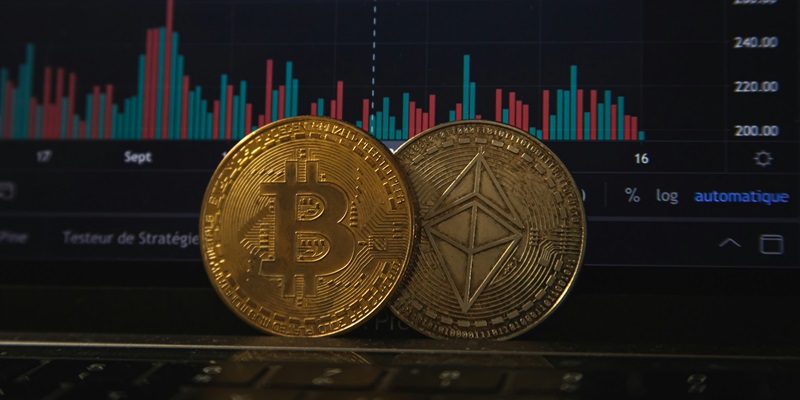Cryptocurrencies have revolutionized the world of finance, with Bitcoin and Ethereum emerging as two prominent players in the market. While both Bitcoin and Ethereum share some similarities, they serve distinct purposes. Bitcoin is often used as a store of value, while Ethereum is predominantly used to interact with decentralized apps (dApps) developed on its blockchain. In this article, we will explore the purpose, functionality, characteristics, technical differences, transaction speed, market performance, and future outlook of Bitcoin and Ethereum.
Purpose and Functionality
Bitcoin and Ethereum have different purposes in the crypto ecosystem. Bitcoin’s decentralized nature, combined with its fixed supply capped at 21 million coins, positions it as a hedge against inflation and an alternative store of value. On the other hand, Ethereum sought to extend the capabilities of blockchain technology, becoming a platform for decentralized applications and smart contracts. Its goal was to enable developers to create dapps on its blockchain, revolutionizing various industries.
Bitcoin’s Characteristics
Bitcoin’s decentralized nature and limited supply are key characteristics that differentiate it from traditional fiat currencies. Its decentralized nature means that it is not controlled by any central authority, making it resistant to censorship and government control. Additionally, the fixed supply of 21 million coins ensures that Bitcoin cannot be inflated like fiat currencies, thus preserving its value over time.
Ethereum’s characteristics
Ethereum’s main feature is its ability to support smart contracts and dapps. Smart contracts are self-executing contracts with the terms of the agreement directly written into code. This allows for trustless transactions and eliminates the need for intermediaries in various industries, such as finance, supply chain management, and real estate.
Decentralized Apps (Dapps) on Ethereum
Dapps on Ethereum allow users to utilize ETH and other crypto assets in various ways. For example, users can use Ethereum as collateral for loans or earn interest when lending their assets to borrowers on decentralized finance (defi) protocols. This opens up new opportunities for individuals to access financial services and generate passive income in a decentralized and transparent manner.
Technical Differences between Bitcoin and Ethereum
While both Bitcoin and Ethereum rely on distributed ledgers and cryptography, they differ in many technical aspects. One notable difference is transaction speed. Bitcoin currently handles an average of seven transactions per second, whereas Ethereum handles around 30 transactions per second. This difference in transaction speed can affect the scalability and usability of each blockchain for different use cases.
Transaction Speed and System Mechanisms
Bitcoin employs a proof-of-work (PoW) system, which requires miners to solve complex mathematical problems to validate transactions and add them to the blockchain. Ethereum, on the other hand, moved to a proof-of-stake (PoS) mechanism in September 2022. PoS allows users to “stake” their ether and participate in the validation process based on the number of coins they hold. This shift to PoS aims to increase energy efficiency and reduce the environmental impact of Ethereum’s network.
Price Performance and Market Share
Bitcoin’s price climbed steadily from less than $17,000 at the start of 2023 to $43,550 by year’s end, despite intermittent periods of minor volatility. This continued price growth solidified Bitcoin’s position as a digital store of value and attracted more institutional investors. Currently, BTC’s market share has surged to just under 50% of the total cryptocurrency market value, while ETH’s market share is around 18%. Despite the difference in market share, both cryptocurrencies have a significant presence in the crypto space.
Future Outlook for Bitcoin and Ethereum
Looking to the future, both Bitcoin and Ethereum are poised to maintain their positions in the crypto space. Bitcoin’s upcoming halving event in 2024, which will reduce the block reward for miners, could lead to further scarcity and potentially drive up the price. Additionally, Ethereum’s ongoing upgrades, such as the transition to Ethereum 2.0 and the implementation of layer 2 solutions, hold potential for further growth and scalability, making it an attractive platform for developers and users alike.
In conclusion, Bitcoin and Ethereum serve different purposes in the crypto ecosystem. Bitcoin is primarily used as a store of value, while Ethereum enables the creation and utilization of decentralized applications and smart contracts. Despite these differences, both cryptocurrencies have made significant contributions to the digital asset space. With Bitcoin’s increasing market share and Ethereum’s ongoing upgrades, they are likely to maintain their positions and continue to shape the future of finance and technology. As the crypto industry evolves, understanding the distinctions and potential of these two leading cryptocurrencies is crucial for investors, developers, and enthusiasts alike.

